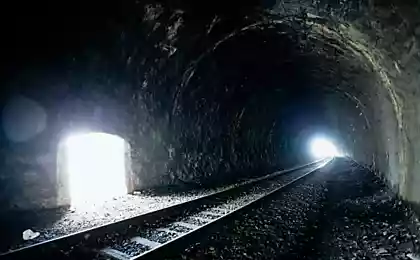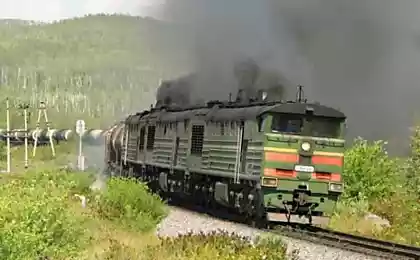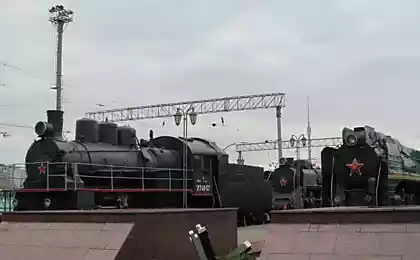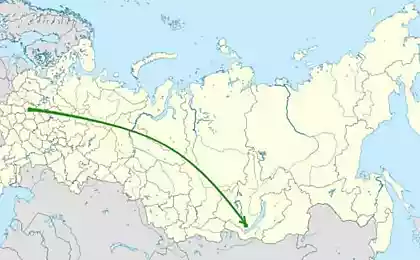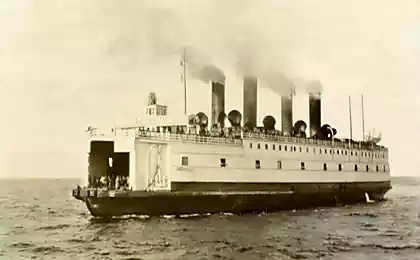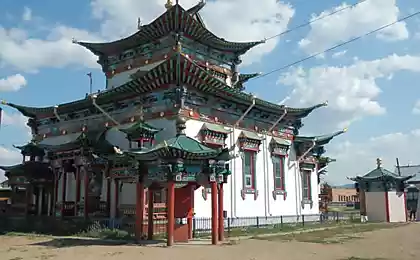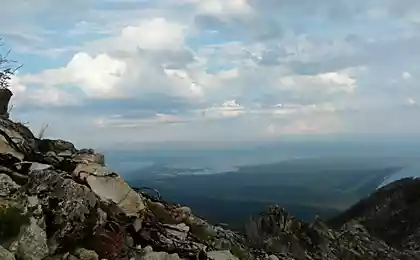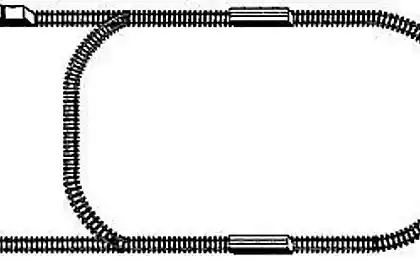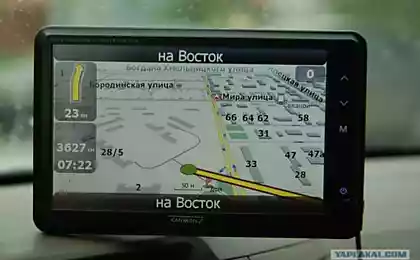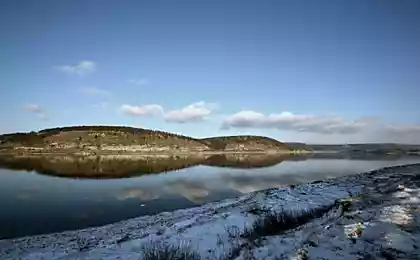2577
Circum-Baikal Railway (Circum)
In the Irkutsk region was designed by the railroad. It has become a unique monument of engineering art.
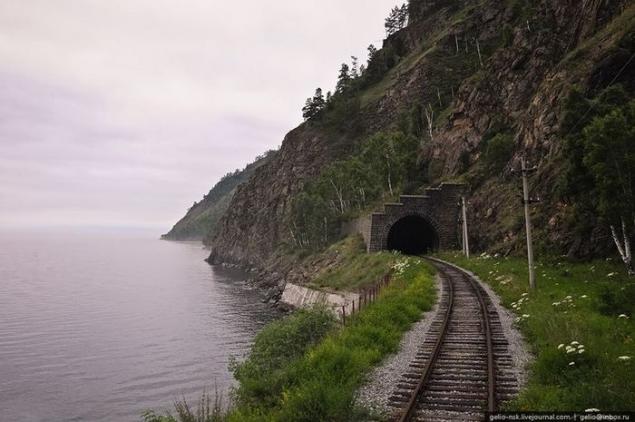
Circum-Baikal Railway - historical railway in the Irkutsk region in the past - part of the Trans-Siberian railway, a unique monument of engineering art, one of the scenic attractions of the Baikal region. Runs along the northern coast of the southern tip of Lake Baikal from the city to the village Sludyanka Baikal on the southern part of the plateau Olkhinskoye. After commissioning, the backup site Circum lost its former importance. Section of the road from the station Irkutsk-sorting to Port Baikal, which took place on the left bank of the Angara, was dismantled in 1956 and completely flooded in 1958 after the construction of the Irkutsk hydroelectric station, in the process of filling the reservoir of Irkutsk.
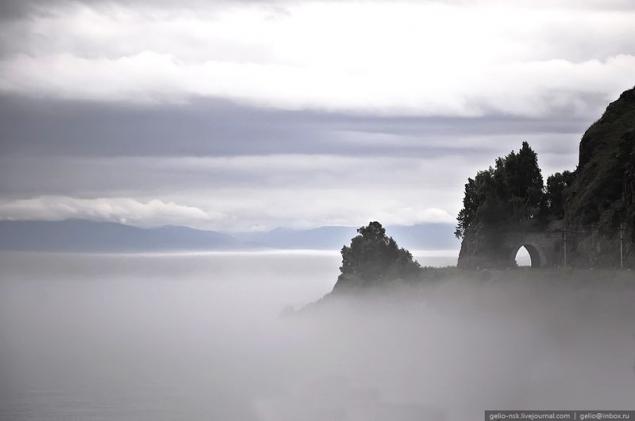
Circum-Baikal Railway - historical railway in the Irkutsk region in the past - part of the Trans-Siberian railway, a unique monument of engineering art, one of the scenic attractions of the Baikal region. Runs along the northern coast of the southern tip of Lake Baikal from the city to the village Sludyanka Baikal on the southern part of the plateau Olkhinskoye. After commissioning, the backup site Circum lost its former importance. Section of the road from the station Irkutsk-sorting to Port Baikal, which took place on the left bank of the Angara, was dismantled in 1956 and completely flooded in 1958 after the construction of the Irkutsk hydroelectric station, in the process of filling the reservoir of Irkutsk.
Initial development work was carried out with the participation of AI Shtukenberg in 1836-1840 years. The final stage of work on the definition of the route of the first section of Circum-Baikal from Irkutsk to Lake Baikal, was held in 1894.
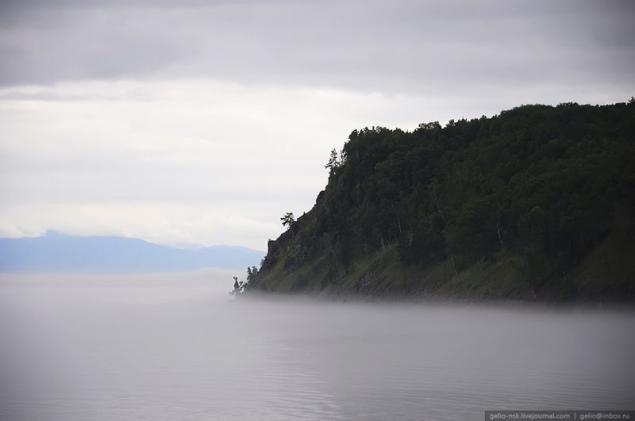
Initial development work was carried out with the participation of AI Shtukenberg in 1836-1840 years. The final stage of work on the definition of the route of the first section of Circum-Baikal from Irkutsk to Lake Baikal, was held in 1894.
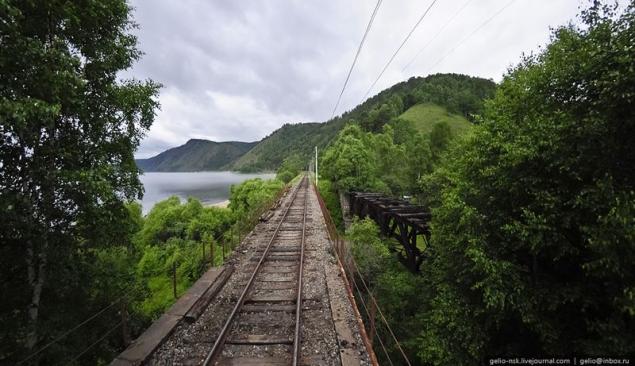
Coast, are rocky ridge with steep slopes, towering above the water's edge at 270-400 m.
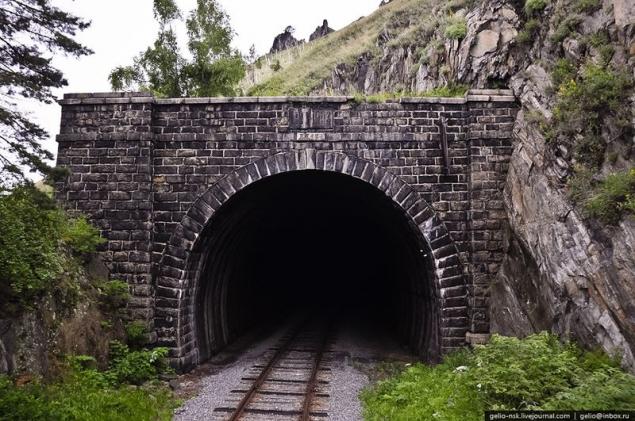
According to the original plan, the area from Slyudyanka to P.Baykala was necessary to build a tunnel 33.
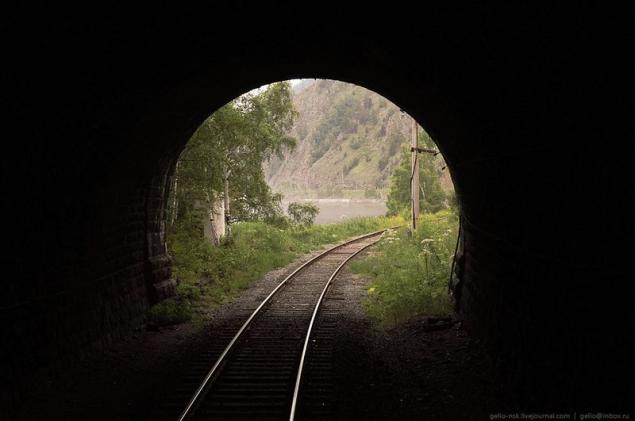
Minimum height proleganiya railroad tracks on the water's edge of Lake Baikal - 5, 33 m.
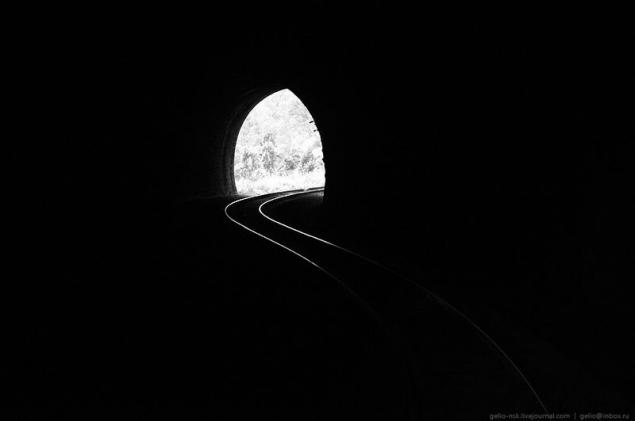
Technical conditions at the device trips determined road capacity in 14 pairs of trains per day.
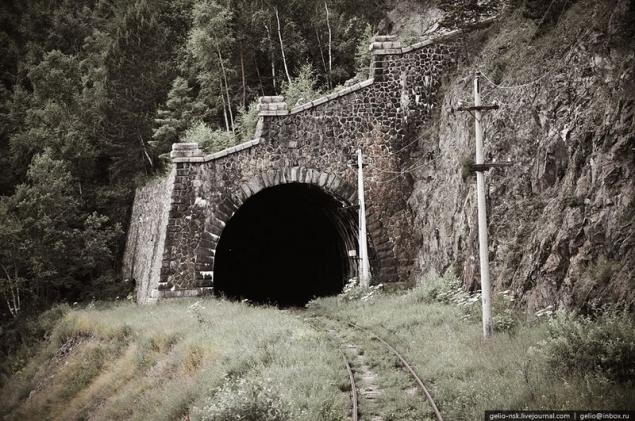
Due to the lack of coastal terraces delivery of materials to the construction site (except stone, quarried locally) was carried out on the water (in the summer - on barges in the winter - in the course of horse-drawn ice). For every kilometer of road was spent on average about car explosives.
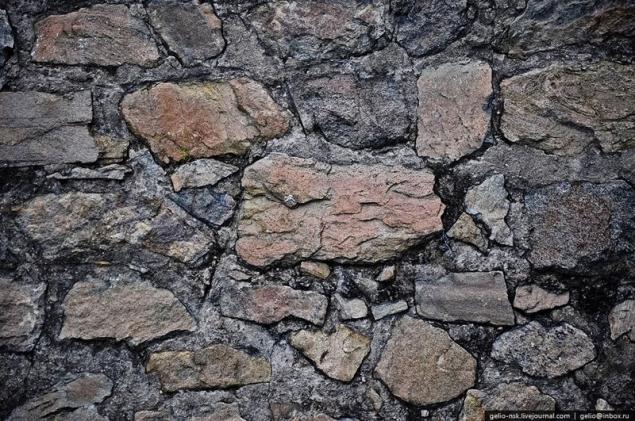
With the commissioning of the entire route Trans-Siberian route around Circum Baikal was completely closed on the highway went cargo, passenger cars. Circum-Baikal railway called "Golden Buckle on the Steel Belt of Russia».
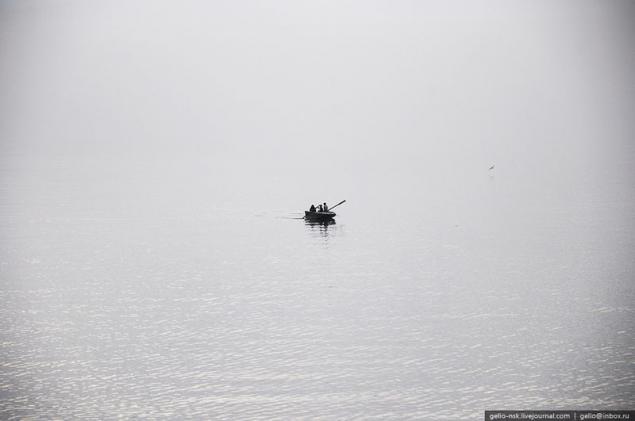
Initially, the road was built in the same track; in 1911-1914 years were carried out work on the construction of the second track, which made it possible to increase the capacity of Circum-Baikal up to 48 pairs of trains per day.

In this case, in the construction of bridges and other engineering structures instead of natural stone was actively used for those times new material - concrete.
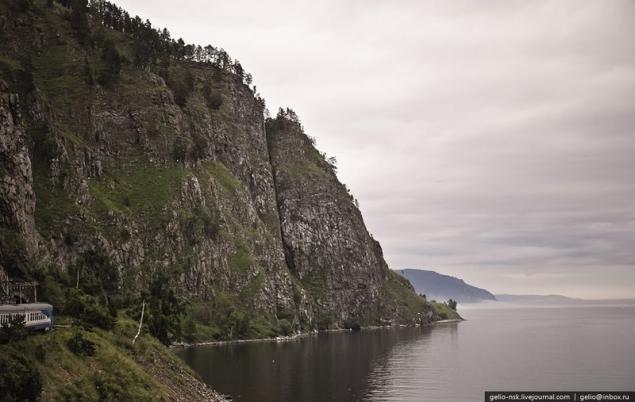
In 1947-1949 was built electrified saddle road Irkutsk - Big Lug - Slyudyanka, significantly shorten the path compared to the Circum-Baikal branch. The main course of the Trans-Siberian Railway was transferred to a new site.

In 1950, construction began on the Irkutsk hydroelectric station. In connection with this part of the Circum-Baikal railway from Irkutsk to the village of Lake Baikal, runs along the Angara, was demolished in 1956 and the same year was flooded during the filling of the reservoir of Irkutsk.
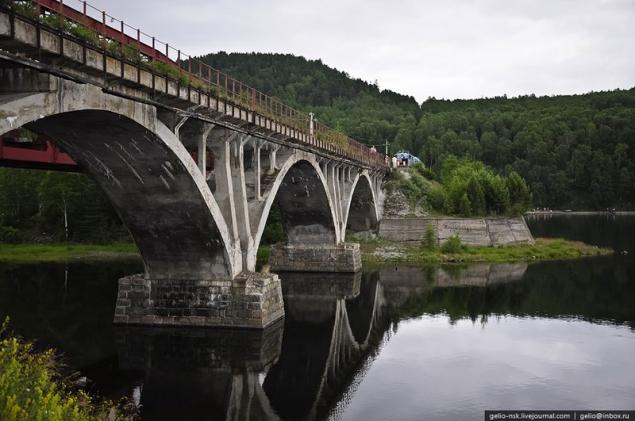
As a result, formed a modern, "dead-end" Circum-Baikal railway route (Slyudyanka-2 - Kultuk - Maritui - Baikal). Highway lost its strategic importance, the number of pairs of trains on the road dropped sharply, with tunnels and bridges was disarming.
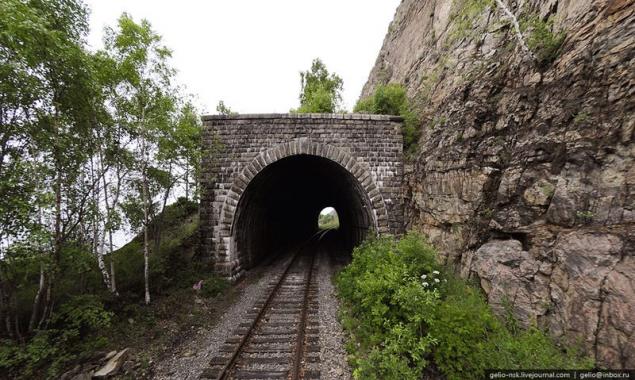
At present, the Circum-Baikal Railway is called branch length of 89 km.
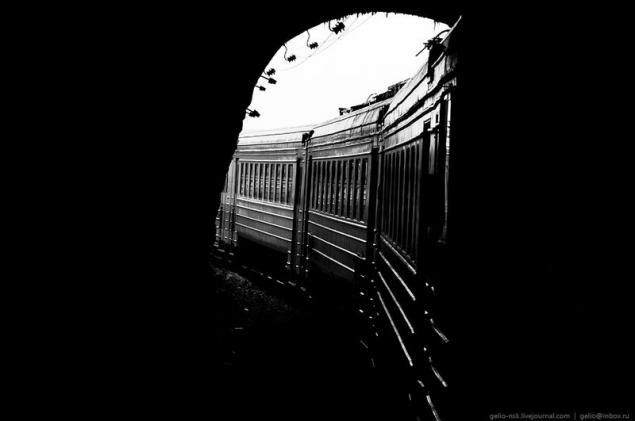
On the road, there are now four stations (Kultuk, Marit Ulanovo and Baikal) and one patrol (137 km).
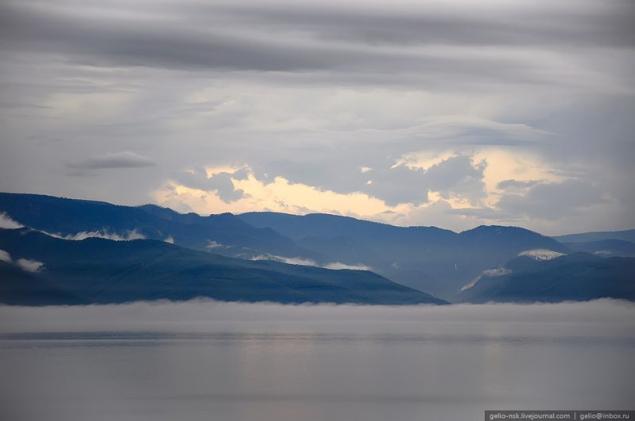
Circum used on 38 tunnels with a total length of 9063 m (the longest of them - the tunnel via the Cape of half the length of 777, 5 m), 15 stone galleries with a total length of 295 m 3 of concrete galleries with holes, 248 bridges and viaducts, 268 retaining walls. < br />
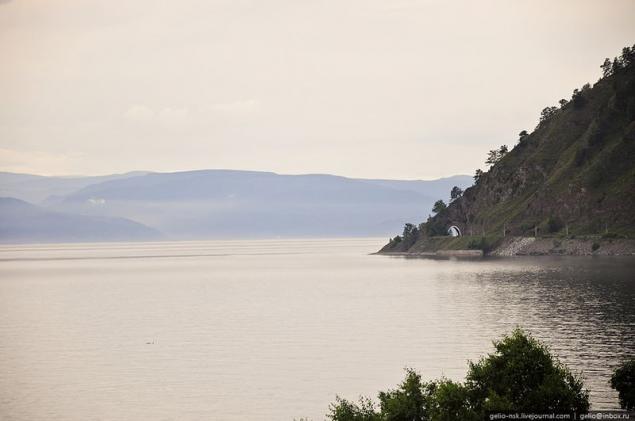
Saturation engineering structures Circum has no equal in Russia and is one of the first places in the world.
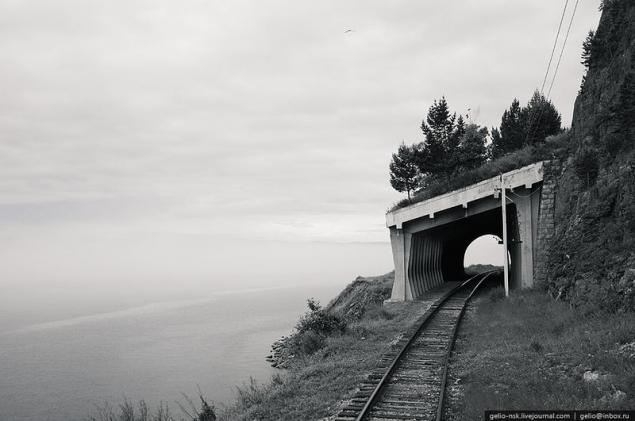
One of the main attractions - Italian wall
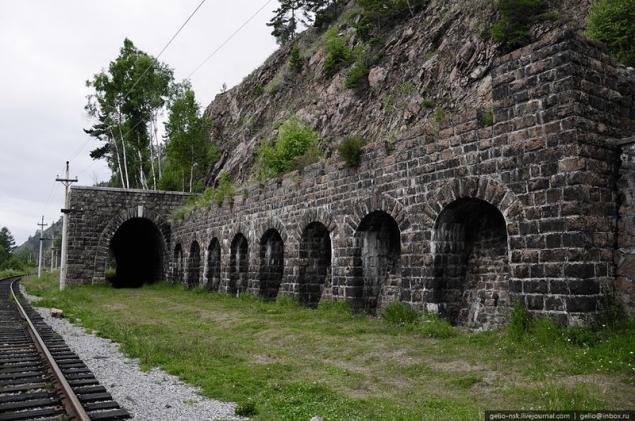
One of the main attractions - Italian wall
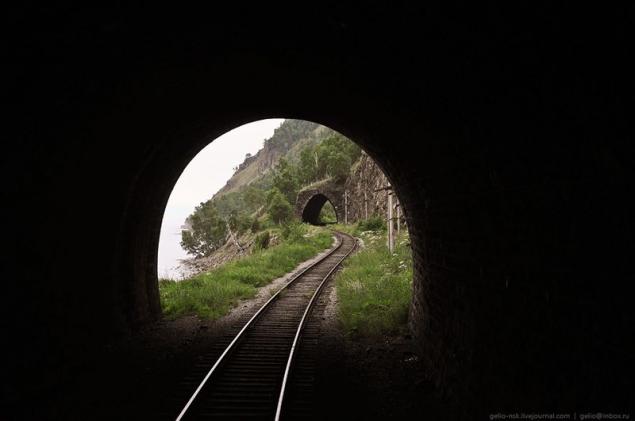
One of the main attractions - Italian wall
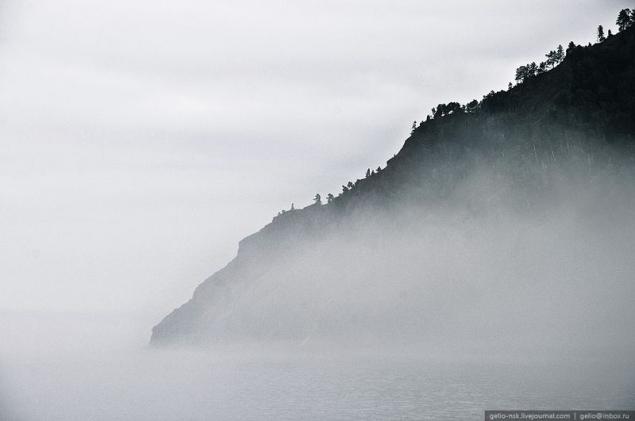
One of the main attractions - Italian wall
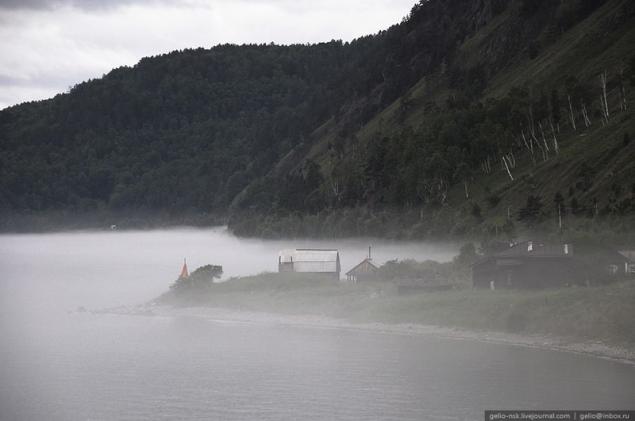
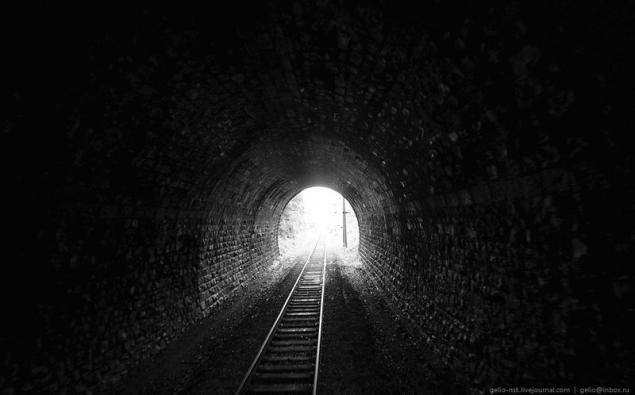
At the beginning of the XXI century on the road regularly runs one train (locomotive and two carriages) a day back and forth. Travel time from Slyudyanka up to station Baikal - 4 hours 40 minutes. This train is called the inhabitants of the villages bordering the word "transfer", reflecting the importance of this transportation for their basic necessities. Another name of the train - "winding" (teeter between stations).
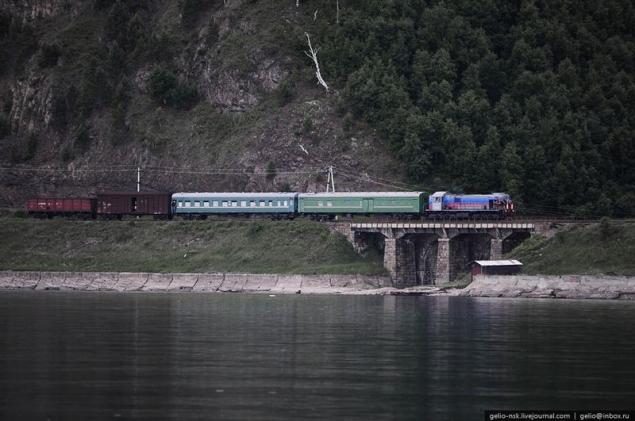
Also periodically run tourist trains, including steam traction and design cars "retro».
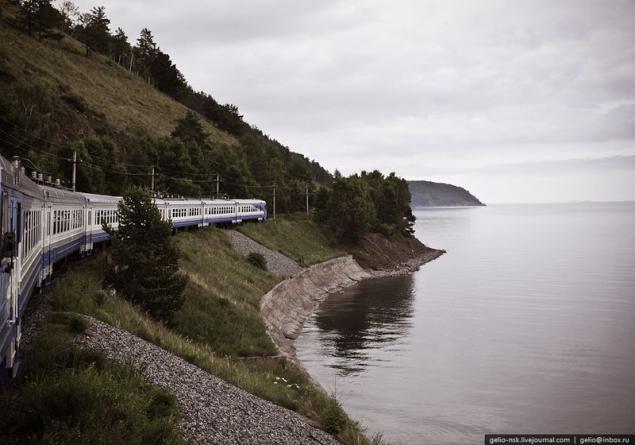
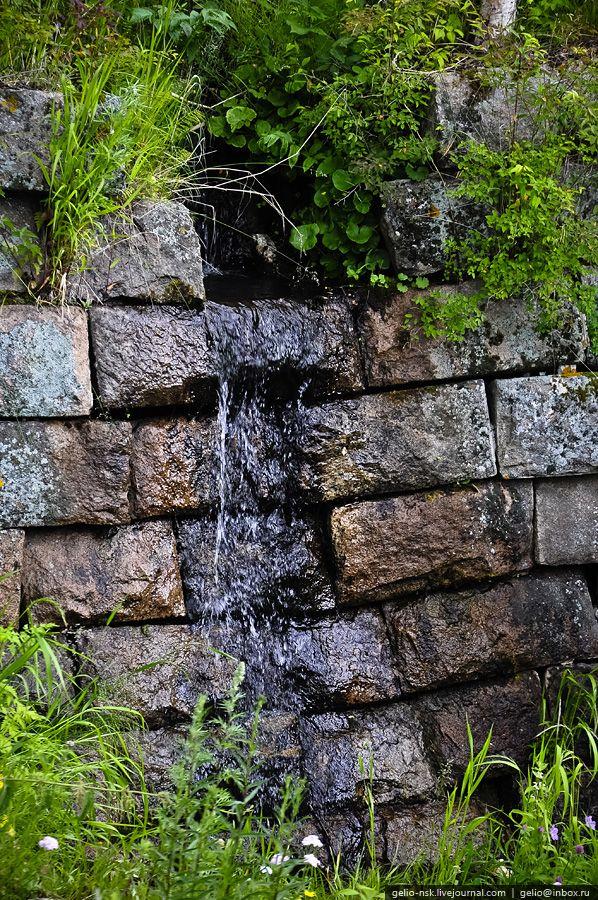
The cab of the locomotive.
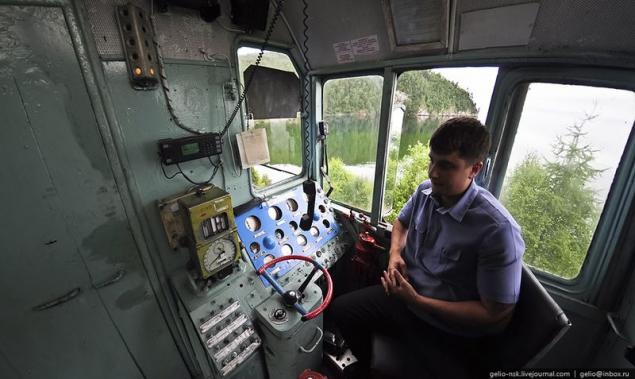
Tunnel №18 «Kirinrey 3" September 13, 1904 there was docked Great Siberian way.
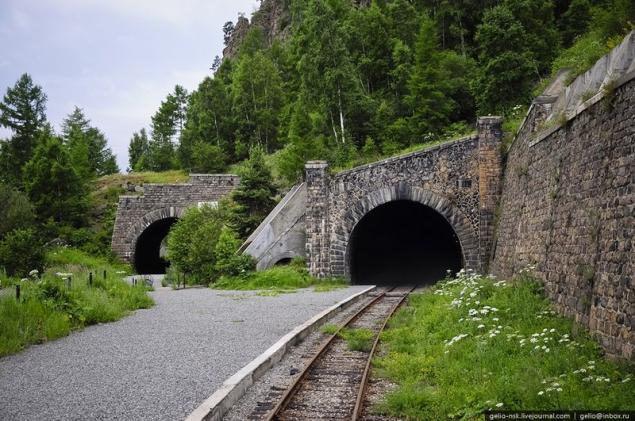
The largest and deepest lake on the planet Earth. Baikal is unique ...
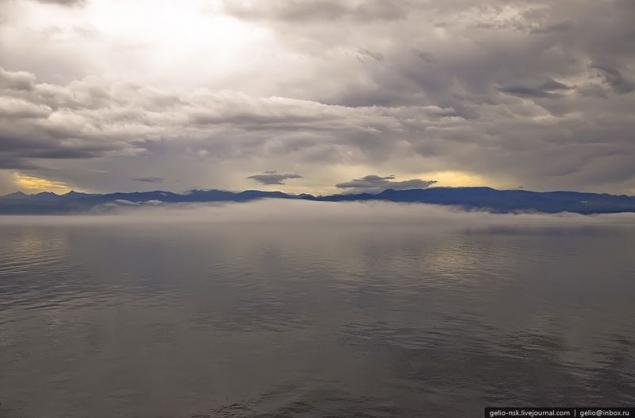
Source: gelio-nsk.livejournal.com

Circum-Baikal Railway - historical railway in the Irkutsk region in the past - part of the Trans-Siberian railway, a unique monument of engineering art, one of the scenic attractions of the Baikal region. Runs along the northern coast of the southern tip of Lake Baikal from the city to the village Sludyanka Baikal on the southern part of the plateau Olkhinskoye. After commissioning, the backup site Circum lost its former importance. Section of the road from the station Irkutsk-sorting to Port Baikal, which took place on the left bank of the Angara, was dismantled in 1956 and completely flooded in 1958 after the construction of the Irkutsk hydroelectric station, in the process of filling the reservoir of Irkutsk.

Circum-Baikal Railway - historical railway in the Irkutsk region in the past - part of the Trans-Siberian railway, a unique monument of engineering art, one of the scenic attractions of the Baikal region. Runs along the northern coast of the southern tip of Lake Baikal from the city to the village Sludyanka Baikal on the southern part of the plateau Olkhinskoye. After commissioning, the backup site Circum lost its former importance. Section of the road from the station Irkutsk-sorting to Port Baikal, which took place on the left bank of the Angara, was dismantled in 1956 and completely flooded in 1958 after the construction of the Irkutsk hydroelectric station, in the process of filling the reservoir of Irkutsk.
Initial development work was carried out with the participation of AI Shtukenberg in 1836-1840 years. The final stage of work on the definition of the route of the first section of Circum-Baikal from Irkutsk to Lake Baikal, was held in 1894.

Initial development work was carried out with the participation of AI Shtukenberg in 1836-1840 years. The final stage of work on the definition of the route of the first section of Circum-Baikal from Irkutsk to Lake Baikal, was held in 1894.

Coast, are rocky ridge with steep slopes, towering above the water's edge at 270-400 m.

According to the original plan, the area from Slyudyanka to P.Baykala was necessary to build a tunnel 33.

Minimum height proleganiya railroad tracks on the water's edge of Lake Baikal - 5, 33 m.

Technical conditions at the device trips determined road capacity in 14 pairs of trains per day.

Due to the lack of coastal terraces delivery of materials to the construction site (except stone, quarried locally) was carried out on the water (in the summer - on barges in the winter - in the course of horse-drawn ice). For every kilometer of road was spent on average about car explosives.

With the commissioning of the entire route Trans-Siberian route around Circum Baikal was completely closed on the highway went cargo, passenger cars. Circum-Baikal railway called "Golden Buckle on the Steel Belt of Russia».

Initially, the road was built in the same track; in 1911-1914 years were carried out work on the construction of the second track, which made it possible to increase the capacity of Circum-Baikal up to 48 pairs of trains per day.

In this case, in the construction of bridges and other engineering structures instead of natural stone was actively used for those times new material - concrete.

In 1947-1949 was built electrified saddle road Irkutsk - Big Lug - Slyudyanka, significantly shorten the path compared to the Circum-Baikal branch. The main course of the Trans-Siberian Railway was transferred to a new site.

In 1950, construction began on the Irkutsk hydroelectric station. In connection with this part of the Circum-Baikal railway from Irkutsk to the village of Lake Baikal, runs along the Angara, was demolished in 1956 and the same year was flooded during the filling of the reservoir of Irkutsk.

As a result, formed a modern, "dead-end" Circum-Baikal railway route (Slyudyanka-2 - Kultuk - Maritui - Baikal). Highway lost its strategic importance, the number of pairs of trains on the road dropped sharply, with tunnels and bridges was disarming.

At present, the Circum-Baikal Railway is called branch length of 89 km.

On the road, there are now four stations (Kultuk, Marit Ulanovo and Baikal) and one patrol (137 km).

Circum used on 38 tunnels with a total length of 9063 m (the longest of them - the tunnel via the Cape of half the length of 777, 5 m), 15 stone galleries with a total length of 295 m 3 of concrete galleries with holes, 248 bridges and viaducts, 268 retaining walls. < br />

Saturation engineering structures Circum has no equal in Russia and is one of the first places in the world.

One of the main attractions - Italian wall

One of the main attractions - Italian wall

One of the main attractions - Italian wall

One of the main attractions - Italian wall


At the beginning of the XXI century on the road regularly runs one train (locomotive and two carriages) a day back and forth. Travel time from Slyudyanka up to station Baikal - 4 hours 40 minutes. This train is called the inhabitants of the villages bordering the word "transfer", reflecting the importance of this transportation for their basic necessities. Another name of the train - "winding" (teeter between stations).

Also periodically run tourist trains, including steam traction and design cars "retro».


The cab of the locomotive.

Tunnel №18 «Kirinrey 3" September 13, 1904 there was docked Great Siberian way.

The largest and deepest lake on the planet Earth. Baikal is unique ...

Source: gelio-nsk.livejournal.com
